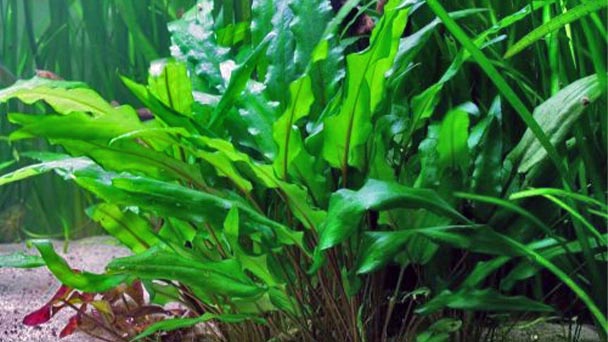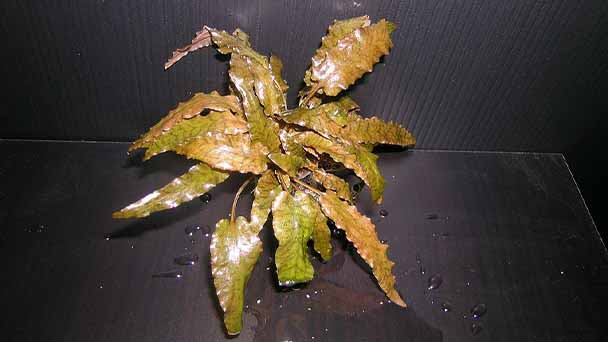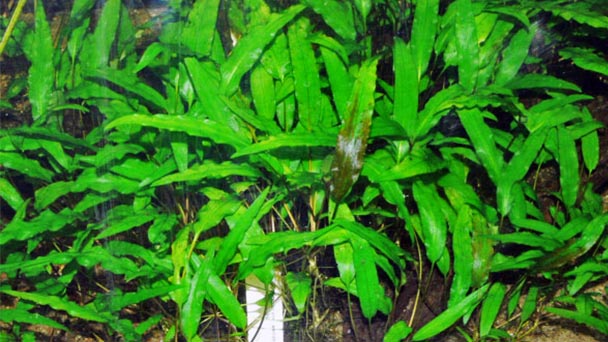Cryptocorynes Profile
Written by Joy
Sep 27 2020

The name Cryptocoryne should date back to the Greek crypto, and it has owned a long history. The common name (water trumpet) is named after the shape of its inflorescence, which is especially typical of the Araceae family.


Cryptocorynes growth habit and growing environment and distribution
The typical habitats of Cryptocoryne are mostly located in streams and rivers with not too rapidly running water, sometimes it can be found in the lowland forest. They also live in seasonally inundated forest pools or on river banks at a high level of water. Although the proper distinguished name is Cryptocoryne, they are commonly regarded as crypts. The English name water trumpet refers to their inflorescence, and a spadix is attached by a spathe (typical for the whole family), which is quite similar to a trumpet.Cryptocoryne is a genus of aquatic plants from the family Araceae. The genus is naturally generally cultivated in tropical Indian areas , Southeast Asia and New Guinea.
The species of Cryptocoryne
The first Cryptocoryne species around the world first appeared in 1779. The genus was written by Friedrich Ernst Ludwig von Fischer in 1828. As is known to all, the scientific classification of Cryptocoryne species is very complicated and there are different thoughts and ideas about it. Lagenandra is another genus closely related to the genus Cryptocoryne. These two species can be easily figured out since the leaves of Cryptocoryne species exhibit is convolute vernation whereas Lagenandra species exhibit is involute vernation.Cryptocorynes cultivation
Cryptocorynes will grow pretty fast if they are cultivated with CO2 and ferts, but not super fast like some stems. Stems grow inches per week while crypts grow several new leaves every week and anubius grow one leaf per week relying on the starting size of the plant and number of rhizome growing points.Cryptocoryne needs stable water conditions to prevent rotting of the stems and leaves. Feeders had better provide at least 2 watts per gallon using full spectrum bulbs . Water temperature should be controlled in a proper range between 75° and 82°F, with a dKH of 3-8 and a pH of 6.0 to 8.0. For best results, Cryptocoryne is also used as a solitary plant on occasions.
Latest Updated
- Benefits of Bugleweed - 7 Science-backed Health Benefits
- Bugleweed Dangers & Side Effects - Is It Poisonous?
- How to Plant Evergreen Trees - What You Should Know
- When to Plant Evergreens - Grow Guide for Evergreen Trees
- 12 Wonderful Evergreen Shrubs for Your Garden
- 12 Popular Evergreen Plants with Pictures for Beginners
- When And How To Prune A Lilac Bush Like a Pro
- How to Grow & Care for Lilac Vine (Hardenbergia Violacea)
- Japanese Lilac Tree (Syringa Reticulata) Care & Propagation Guide
- Shumard Oak Pros and Cons - What to Know
Popular Articles
- Winter maintenance of Antirrhinum Majus
- How to Grow Terminalia Mantaly Tree
- How to Grow and Care for Crossostephium Chinense
- How to grow Antirrhinum Majus in spring
- Peristeria Elata (Dove Orchid) Profile: Info & Care Guide
- Underwatered Snake Plant (Sansevieria Trifasciata) - Signs And How To Fix
- How to Care for Brazilian Jasmine Plant (Mandevilla Sanderi)
- How to Grow & Care for Graptopetalum Purple Delight in Summer
- Rosa Chinensis (China Rose): Plant Growing & Care Tips
- How to Care for Baby Sun Rose (Aptenia Cordifolia)